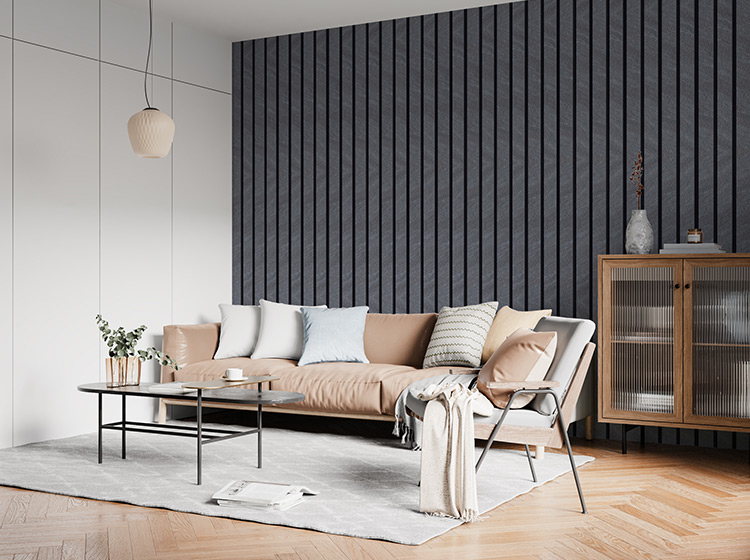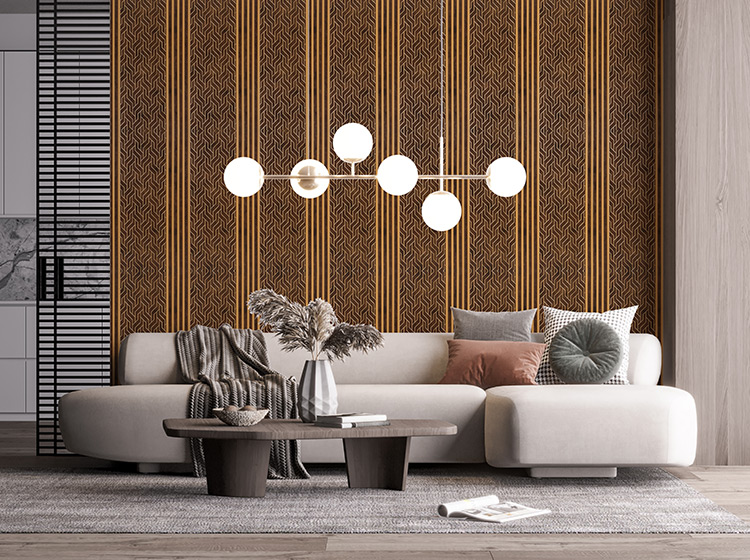In architectural design, wall panels with a louvers design offer a compelling blend of functionality and aesthetic appeal. These panels, featuring horizontal or vertical slats, provide an array of benefits that enhance both the visual and practical aspects of building interiors and exteriors. From boosting energy efficiency to offering unique design elements, louvers-style wall panels play a crucial role in modern architecture.
Top 4 Notable Benefits of Louvers Panels :
1. Enhanced Aesthetic Appeal :
One of the standout benefits of louvers design in wall panels is their contribution to aesthetic appeal. The sleek, linear patterns created by louvers add a modern and sophisticated touch to any space. These panels can be used as feature walls or accents in both residential and commercial settings, creating visual interest and a dynamic interplay of light and shadow.
The louvers design allows for a variety of finishes and materials, including wood, metal, and composite materials. This versatility enables architects and designers to customize panels to match different styles and themes, from contemporary to traditional. By incorporating louvers panels, designers can achieve a clean, streamlined look that enhances the overall architectural expression of a space.
2. Improved Light Control and Privacy :
Wall panels with a louvers design offer practical benefits such as improved light control and privacy. The orientation and spacing of the louvers can be adjusted to regulate the amount of natural light that enters a space. This allows for optimal daylighting while minimizing glare and reducing the need for artificial lighting.
In addition to light control, louvers panels provide enhanced privacy without completely blocking views. The angled slats of the louvers design obscure direct sightlines, allowing occupants to enjoy privacy while still benefiting from natural light and external views. This feature is particularly valuable in urban environments where privacy and light management are essential.
3. Durability and Low Maintenance :
Wall panels with a louvers design are known for their durability and ease of maintenance. Constructed from high-quality materials such as aluminum, treated wood, or durable composites, these panels are designed to withstand various environmental conditions. Their robust construction ensures longevity and reliable performance.
The low-maintenance nature of louvers panels is another significant benefit. Their design minimizes the accumulation of dust and dirt, making cleaning straightforward. Regular dusting or occasional wipe-downs are typically sufficient to maintain their appearance and functionality, making them a practical choice for both residential and commercial applications.
4. Versatile Application and Design Flexibility :
Louvers design wall panels offer remarkable versatility in application and design. They can be used in a variety of settings, including interior walls, exterior facades, partitions, and ceiling features. Their flexibility allows architects and designers to incorporate them in different ways, adapting to various spatial and functional requirements.
The ability to customize louvers panels in terms of size, spacing, and orientation further enhances their design flexibility. This adaptability enables the creation of unique patterns and configurations that align with the overall design vision of a project. Whether used as a focal point or a subtle detail, louvers panels provide endless possibilities for creative expression.
Conclusion :
The integration of louvers design in wall panels offers a range of benefits that enhance both the functionality and aesthetics of architectural spaces. From improving light control and privacy to promoting ventilation and ensuring durability, louvers panels are a valuable addition to modern architectural design.
Their versatile application and design flexibility make them suitable for a wide range of projects, contributing to innovative and visually striking environments. By incorporating louvers panels, architects and designers can achieve a harmonious balance of style, practicality, and performance in their designs.




